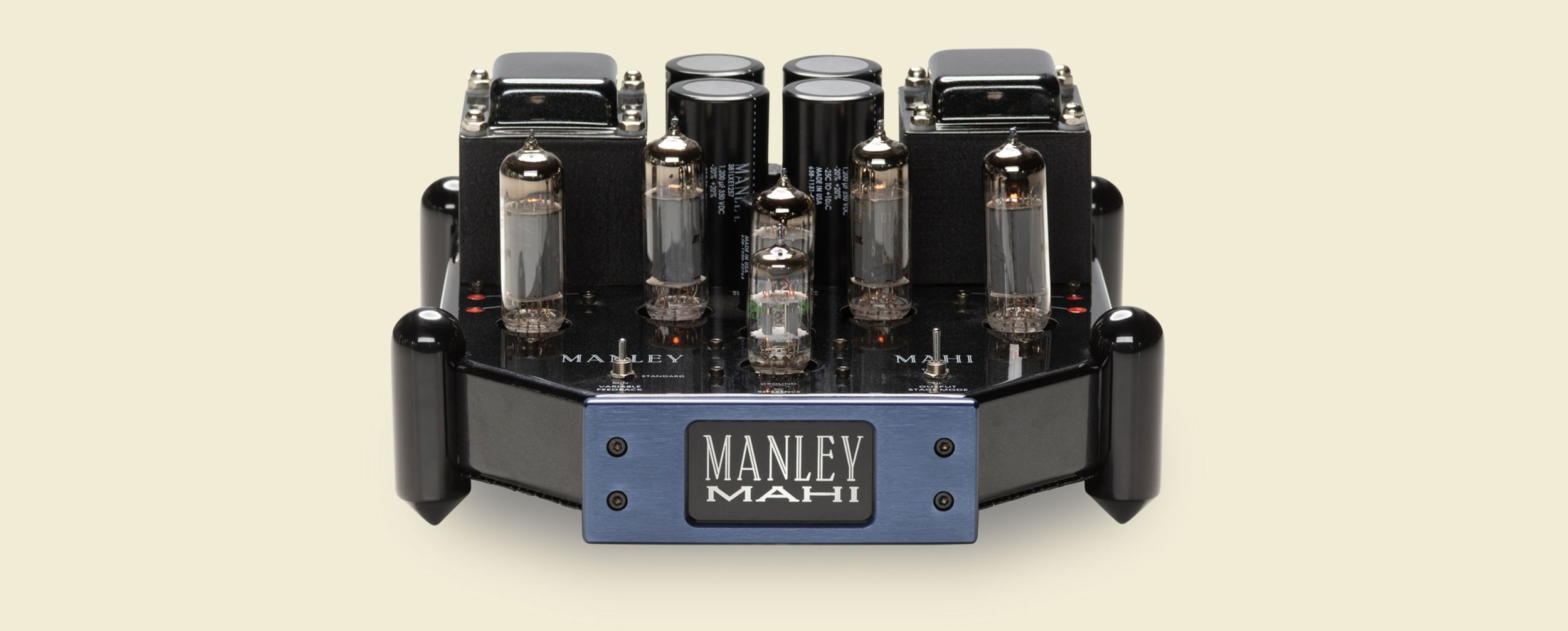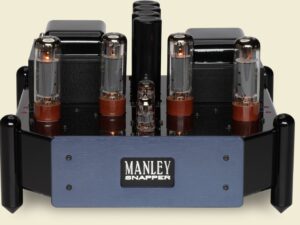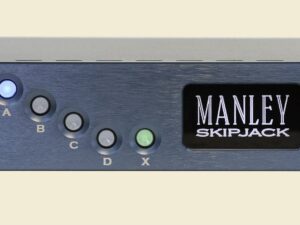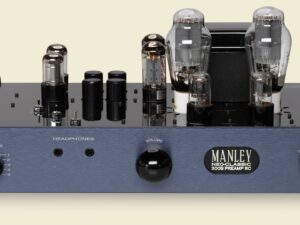Description
Our longtime love affair with the EL84 has never sounded tighter, faster, or deeper than it does in the MAHI. Larger B+ rail storage means control, impact, and slamming bass punch. Nimble and lively, the MAHI delivers 20 Watts in TRIODE mode and 40 Watts in Ultra-Linear mode through our own custom transformers, engineered and wound at Manley Labs. Variable Feedback switch provides a sonic palette ranging from sweet and seductive to powerful and rockin’. Sold in pairs. (Mahi-Mahi!)
These cute little guys produce around 40 watts RMS in Ultra-Linear mode or around 20 watts in TRIODE from a quartet of EL84 / 6BQ5 tubes driven by a 12BH7 (or 6414) dual triode driver and a 12AT7EH input dual triode. The EL84 has been one of our very favorite tubes for many years, extremely long lasting and reliable, and can be considered the smaller brother of the much beloved EL34: really quick-sounding both in the bass and especially in the top end. And of course this has a lot to do with our Manley Output transformer, the same one we build for the Manley Stingrays.
We have been building EL84 amplifiers for well over a decade. The Manley-branded Tiny Triodes were much acclaimed in the early 1990’s. In 1993 after the Manley company split off from VTL, the Manley Tiny Triodes underwent a chassis rework to become the Manley 35 watt Monoblocks soon followed by the 50 Watt Monoblocks. The more powerful Ultra-Linear mode operation became the standard with hard-wired Triode operation or Triode/UL switching available upon special request.
After the introduction of the Stingray Integrated amplifier in 1998, we then went back and incorporated the Stingray’s new circuitry design refinements into the 50 Watt Monoblocks. Finally, big bass out of a small amplifier! So, topology-wise, the post-1998 50 watters were the monoblock version of the stereo Stingray, with the additional variable feedback feature. After the introduction of the fabulous Manley Snappers in 2002, it was obvious that we had to update our classic EL84 50 watt monoblocks both cosmetically and feature-wise. Make-over time!
Everyone was always asking us for Triode/Ultra-Linear switching. We listened to your requests and feature the Triode-UL switch as standardequipment on the MAHI’s. As are the beautiful german WBT binding posts. Also we increased the B+ rail capacity in a major way. The 50 Watt monos only had around 45 Joules or energy storage in the B+ rail. Now the MAHI’s have nearly 115 Joules of energy storage for the B+ rail. You can hear this improvement in the especially in the bass region: tighter, faster, deeper. More is more in this case.
The chassis design is like a mini-Snapper. They are so cute! And of course they come standard as a pair so you get…. “Mahi-Mahi.”
We believe the MANLEY MAHI’s give a lot of value for an affordable price and we think you will be surprised at just how big these little guys sound. You have no idea how fabulous these amplifiers are.






